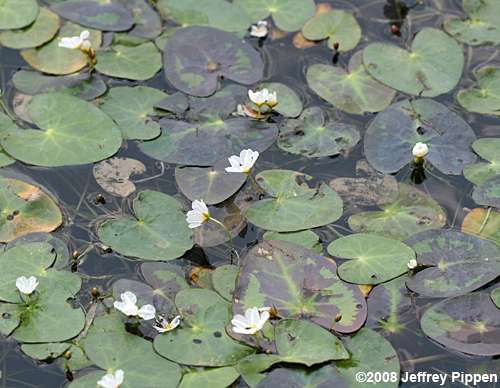Scientific name: Nymphoides
Physical Characteristics
Leaves:
- Floating
- Alternate
- Long leaf stalks
Flowers:
- White or bright yellow in color
Stem:
- Stout
Roots:
- Short
- Clustered
Where Does it Grow?
Floating heart can be found in quiet flowing rivers, streams and lakes.
Pros and Cons of Floating Heart
Floating heart has no known direct food value to wildlife. Submerged portions of all aquatic plants provide habitats for many micro and macro invertebrates. These invertebrates in turn are used as food by fish and other wildlife species (e.g. amphibians, reptiles, ducks, etc.). After aquatic plants die, their decomposition by bacteria and fungi provides food (called “detritus”) for many aquatic invertebrates.
USDA, NRCS. 2018. The PLANTS Database (http://plants.usda.gov, 28 March 2018). National Plant Data Team, Greensboro, NC 27401-4901 USA.
Information and photos courtesy of AquaPlant A Diagnostics Tool for Pond Plants and Algae.

